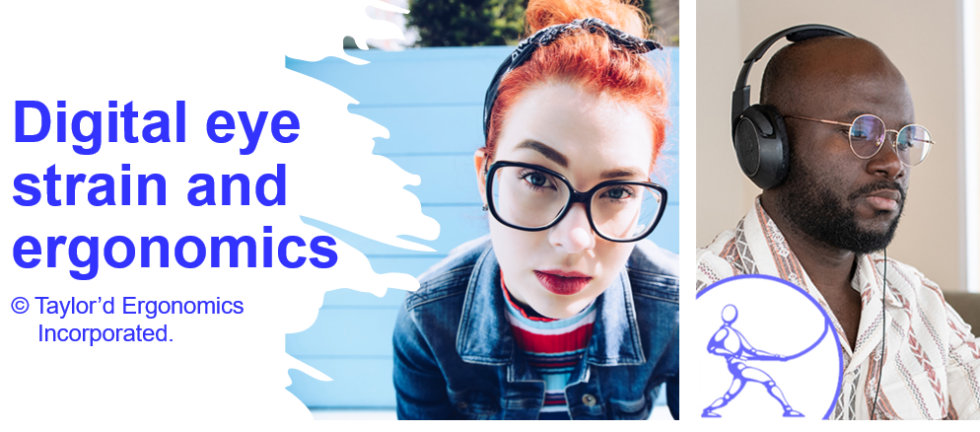Did your mother ever tell you that sitting too close to the TV would ruin your vision? Have you wondered whether sitting at a computer all day—much closer than you used to sit cross-legged in front of the TV—is harming your eyes?
For safety professionals, ergonomists, and HR teams, this isn’t just a passing thought—it’s an important workplace consideration.
According to the Canadian Association of Optometrists (CAO), prolonged computer use can lead to headaches, dry or irritated eyes, blurry vision, and double vision. These issues are collectively referred to as “computer vision syndrome” or “digital eye strain.” One of the causes is a slower rate of blinking, which happens when people focus on screens for long periods. It’s also more common in people whose vision isn’t properly corrected—if their lens prescription is out of date, or they haven’t had a recent eye exam, they may be at greater risk. It turns out, mom’s threats refer to temporary issues, not permanent changes. (Did she know? I suspect she just wanted us to go outside and get some exercise.)
What About Multifocal Lenses?
Employees who wear multifocal lenses (bifocals or progressives) experience additional challenges when using a computer. These glasses are designed for multiple distances, but the area meant for intermediate vision—where most screens are positioned—is relatively small. This can lead to awkward head tilting, neck strain, and poor posture as employees try to find the right focus. Over time, repetitively bobbing your head up and down can contribute to ergonomics issues, including back and neck pain.
What Does This Have to Do with Workplace Safety and HR?
You might not think of vision care as part of workplace safety, but it can have a direct impact on employee well-being and performance. Digital eye strain can lead to discomfort, reduced focus, and even an increased likelihood of mistakes—especially in roles that require attention to detail or prolonged screen time.
Beyond that, poor vision can contribute to ergonomics issues. Employees who struggle to see clearly may lean forward, hunch over, or push their chairs away and reach for the mouse, leading to neck, arm, and back strain over time.
What Can Workplaces Do?
While you can’t control how much screen time employees have outside of work, small adjustments can make a big difference during the workday. Here are a few simple ways to help:
👓 Encourage regular eye exams – Many employees don’t realize their prescription has changed until they start experiencing discomfort. Regular check-ups can help prevent this.
💡 Pay attention to ergonomics – Proper screen height and viewing distance, good lighting, and reducing glare can minimize strain and improve comfort.
📏 Remind employees about the 20-20-20 rule – Every 20 minutes, look 20 feet away for at least 20 seconds. It’s a small habit that can reduce eye fatigue.
🖥️ Consider computer-specific glasses – Employees who wear multifocals may benefit from glasses designed specifically for computer work, which provide a larger viewing area for intermediate distances.
Why We Ask About Vision Care
When we ask about vision care in our pre-assessment survey, it’s not just about eyesight—it’s about creating a work environment where employees can see clearly, work comfortably, and stay productive. After all, taking care of our eyes is just as important as taking care of the rest of our bodies.
Need some help?
Book an office ergo assessment (in person or virtual)
Join us on February 27 in Cambridge for our one-day office ergo workshop
Bring an ergonomist in for a day to facilitate workshops and visit desk-side with participants
Schedule a gamified ergo awareness day with one of our ergonomists
Join us for a virtual office ergo training session on Sept 16 or have us run a session just for your employees.


